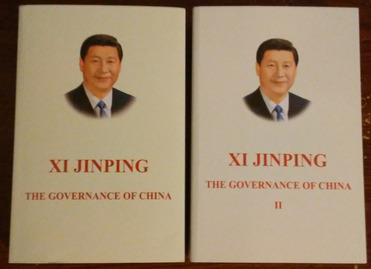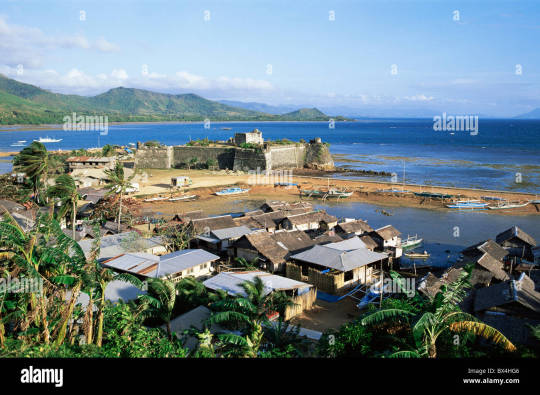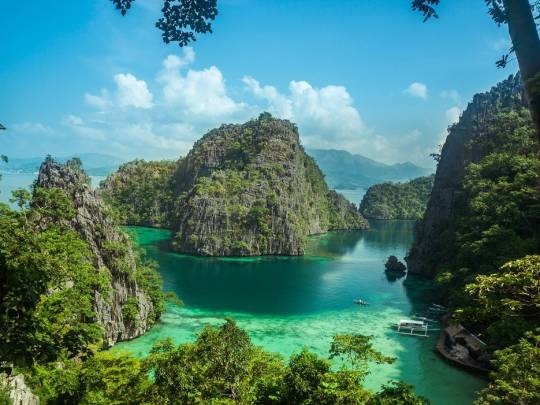#continental drift divide
Text
i think my au is trying to disown me
#or like run away from home or something#this sequel does not like me at all#it is upsetting#flipside au#continental drift divide#velvet talks
2 notes
·
View notes
Text
Birthday party, cheesecake, jelly bean, boom

The other night I drifted nice, continental drift divide, mountains sit in a line, Leonard Bernstein, Leonid Brezhnev, Lenny Bruce and Lester Bangs




iykyk
This didn't come out quite the way I had hoped, but my motto for 2024 is "it doesn't have to be good, it just needs to exist."
12:30 - 3:30 start to finish
Original sketch

#rem#it's the end of the world as we know it#iteotwawki#i feel fine#time i had some time alone#leonard bernstein#leonid brezhnev#lenny bruce#lester bangs#1980s#my art#drawing#art#doodle#sketch#birthday party#cheesecake#jelly bean#boom#iykyk
11 notes
·
View notes
Note
For writing purposes, have you any anecdotes from battle reenactment, or references on the battle of Yorktown (1781)?
Oh that's a fun question… my first disclaimer is that I only started reenacting fairly recently, so I only have so many anecdotes. My second disclaimer is that I definitely know more about the British side of things than the Continental side, but luckily most of the military organization and conduct was virtually the same on both sides. My last is that I am no particular expert on Yorktown specifically—I've heard they've done huge reenactments there in the past but I have not been in the hobby long enough to have gone to one, unfortunately. However, what I would be happy to talk about are some historical details you could use in setting up your scene and kind of bringing it to life, most of which only occurred to me after experiencing them firsthand!
“The Fog of War”
Which is to say, powder smoke. Great white plumes of it, tearing from muskets on every volley, drifting across the field and saturating the air with the bitter smell of sulfur. I find myself holding my breath on every volley just so I won’t inhale a big lungful of it—at certain points it’s like marching through a cloud, and humid weather can exacerbate that even further, since it won’t dissipate. And it lingers. I remember standing up at the very top of the valley at Monmouth in the evening after the first day and you could still see that smoke blurring the horizon, hours later. We tend not to think so much about it as a modern audience, but it was a huge factor in these historical battles: you could write about how it obscures the visibility, how the smell lingers, the terrifying sight of an enemy battalion emerging from the smoke with bayonets fixed…
The Scale
Let’s be honest, reenactments don’t tend to be really massive events���some events are bigger than others but overall it’s a niche hobby and even our best turnouts are nowhere near the size of these battles in reality (my regiment requires a minimum of a mere 8 members to commit to an event for us to go…). Historically you’d be having somewhere between roughly 500–700 men per regiment, divided into ten companies. As a field musician, since it would have been my job, I’m always thinking about how it would have been to actually communicate with and maneuver a group that large with only a handful of drummers and fifers per company, especially with that many other companies on the field—it’s hard enough playing for 20 something reenactors across two units! And Yorktown was one of the biggest conflicts in the war, both literally (with regard to number of men involved) and figuratively, given how decisive it was; I can only imagine how much pressure it would have been on the commanding officers as they actually made those decisions for dozens or hundreds of men. Being on the battlefield is actually rather isolating, in a way—I’ll see certain regiments in camp and then never see them on the field because we’re in completely different places, so, you know, could make for some dramatic Character Worrying in the story if you're so inclined.
Last but not least, because I’m a little biased but still feel it’s important:
The Music (and other Sounds of War)
Being on a battlefield is loud! You’ve got men roaring as they head into a bayonet charge, drumbeats punctuating shouted orders, volleys firing, the shrill sound of another company’s fifes playing on the advance. When you've got artillery you can literally feel the shots reverberate through the ground beneath your feet, even across the field. Occasionally muskets don’t fire the first round, so they get double-loaded with gunpowder on the second—the 54th had this happen at my last event and when the shot went off it was so loud it temporarily deafened the two men closest to it. War is noisy.
And of course I can’t not talk about the music—you could mention the musicians switching tunes to reflect a different maneuver, or mention listening across the field, hoping to hear the Cease Fire from the enemy. Fifes are loud instruments, designed to carry across these wide-open spaces, so often you’re hearing multiple companies’ musicians on top of each other (and even on top of that, some light infantry and dragoon companies were actually using bugles instead of fifes!). On bayonet charges we play the Reveille, on the advance we tend to do British Grenadiers. When men are aiming and firing there’s a different short drum beat for every command (make ready/present/fire). Obviously it’d be a bit much to write in every one of those instances, but it kind of puts it in context how frequently you’d be hearing music on the battlefield.
Anyway. If you can’t tell I love talking about reenacting. Thanks for letting me infodump to you and, though it’s not Yorktown-specific, I hope this maybe gives you some inspiration or some contextual material to work with while you’re writing!
#I need to go to another event!!! this is making me so excited#I love to talk about reenactment. Clearly#the captain answers#amrev#revwar#god save the cheshire regiment#long post#american revolution#revolutionary war#the captain's lectures#awi
28 notes
·
View notes
Text
Battle of the Fear Bands!
B4R1: The Extinction
It's the End of the World As We Know It:
“It's in the title. The song is all about "the terrible change", so to speak, watching everyone and everything you know fall away. It's chaotic and fast, evoking the feeling of being trapped in a disaster. It may be cliché, but IMO, this is the definitive Extinction song.”
youtube
The Eyes of Extinction:
youtube
Lyrics below the line!
It's the End of the World As We Know It:
… That's great, it starts with an earthquake
Birds and snakes, and aeroplanes
And Lenny Bruce is not afraid
… Eye of a hurricane, listen to yourself churn
World serves its own needs
Don't mis-serve your own needs
Speed it up a notch, speed, grunt, no, strength
The ladder starts to clatter
With a fear of height, down, height
Wire in a fire, represent the seven games
And a government for hire and a combat site
Left her, wasn't coming in a hurry
With the Furies breathing down your neck
… Team by team, reporters baffled, trumped, tethered, cropped
Look at that low plane, fine, then
Uh oh, overflow, population, common group
But it'll do, save yourself, serve yourself
World serves its own needs, listen to your heart bleed
Tell me with the Rapture and the reverent in the right, right
You vitriolic, patriotic, slam fight, bright light
Feeling pretty psyched
… It's the end of the world as we know it
It's the end of the world as we know it
It's the end of the world as we know it and I feel fine
… Six o'clock, T.V. hour, don't get caught in foreign tower
Slash and burn, return, listen to yourself churn
Lock him in uniform, book burning, bloodletting
Every motive escalate, automotive incinerate
Light a candle, light a motive, step down, step down
Watch your heel crush, crush, uh oh
This means no fear, cavalier, renegade and steering clear
A tournament, a tournament, a tournament of lies
Offer me solutions, offer me alternatives and I decline
… It's the end of the world as we know it (I had some time alone)
It's the end of the world as we know it (I had some time alone)
It's the end of the world as we know it and I feel fine (time I had some time alone)
I feel fine (I feel fine)
… It's the end of the world as we know it (time I had some time alone)
It's the end of the world as we know it (time I had some time alone)
It's the end of the world as we know it and I feel fine (time I had some time alone)
… The other night I drifted nice continental drift divide
Mountains sit in a line, Leonard Bernstein
Leonid Brezhnev, Lenny Bruce and Lester Bangs
Birthday party, cheesecake, jellybean, boom
You symbiotic, patriotic, slam but neck, right, right
… It's the end of the world as we know it (time I had some time alone)
It's the end of the world as we know it (time I had some time alone)
It's the end of the world as we know it and I feel fine (time I had some time alone)
… It's the end of the world as we know it
It's the end of the world as we know it
It's the end of the world as we know it and I feel fine (time I had some time alone)
… It's the end of the world as we know it (time I had some time alone)
It's the end of the world as we know it (time I had some time alone)
It's the end of the world as we know it and I feel fine (time I had some time alone)
… It's the end of the world as we know it (time I had some time alone)
It's the end of the world as we know it (time I had some time alone)
It's the end of the world as we know it and I feel fine (time I had some time alone)
The Eyes of Extinction:
Hiding
Hiding under the ground
Is the world still turning round?
Writing
I give names to the colors and shapes
Can I recall my lover's face?
Sliding
Are there a thousand animals near
Or is the breathing that I hear the space from one to ten
From blue to white to grey?
And when I stare into the eyes of extinction
Where a memory's asleep
Where it's unsalvageably deep
Will I blend into the water or surrender
And be truly, truly gone in annihilation's splendor?
Hunt me
I'll be running stray from the pack
Blood and moonlight glow on my back
Want me
Come on and give me reason to sing
Turn me into anything
Confront me
Because the choice is clear as ice
Between the emptiness, concise and dead, or birth again
A chaos shaped like God
And when I stare into the eyes of extinction
Where a memory's asleep
Where it's unsalvageably deep
Will I blend into the water or surrender
And be truly, truly gone in annihilation's splendor?
Come stare into the eyes of extinction with me
And together we might see another burning of the dawn
When it's empty up in heaven, there among the last debris
Is the seed still green and tender of a life that's living on
And if I stare into the eyes of extinction
And they're staring back at me
All the ghosts that they would see
Do you know how much is lost when you are blinking?
Every beast that breathed infinity
The love of lightning's warmth
And if I stare into the eyes
I stare into the eyes
I stare into the eyes of extinction
And if I stare into the eyes
I stare into the eyes
I stare into the eyes of extinction
And if I stare into the eyes
I stare into the eyes
I stare into the eyes of extinction
2 notes
·
View notes
Audio
Prairiewolf s/t LP - not that I've been looking, but this is the first album I've heard that I feel is the American equivalent of the very British electro-pastoralia purveyed by Clay Pipe Music
Recorded 8,000 feet above sea level in Colorado’s Rocky Mountains, Prairiewolf’s first long-player offers listeners a fresh and free-flowing slice of cosmic/organic Americana — spiritual instrumentals driven by Fender Rhodes, lap steel, Mellotron, guitar, synth, bass and an assortment of vintage drum machines. Sandy Bull communing with Alice Coltrane, Tangerine Dream finding common ground with Don Cherry, sweet kosmische jams rising out of the Continental Divide.
Together since early 2022, Prairiewolf consists of Stefan Beck (who has made recent waves in the underground as Golden Brown) on guitar and lap steel, Jeremy Erwin (the man behind the acclaimed Electric Miles blog The Heat Warps) on keys and Tyler Wilcox (a music writer with bylines in Aquarium Drunkard, Pitchfork and Maggot Brain) on bass.
Drawn from sessions taped in the fall and winter of 2022, Prairiewolf’s self-titled debut is an eclectic-but-cohesive collection — 10 original compositions that drift beautifully from zone to zone, sometimes lush and lovely (“Lunar Deluxe,” “Technicolor Dream Hearse”), sometimes weird and woozy ("Cogs," "Labwerk"). Sometimes it’s all of those things at once. Mastered by Andrew Weathers and released on vinyl and compact disc by Nashville’s Centripetal Force, Prairiewolf is a welcome trip into higher sonic elevations.
RIYL: Sandy Bull, Alice Coltrane, Bitchin Bajas, Don Cherry
Prairiewolf is Stefan Beck, Tyler Wilcox, and Jeremy Erwin
Artwork by Stefan Beck
14 notes
·
View notes
Text
That's great, it starts with an earthquake
Birds and snakes, and aeroplanes
Lenny Bruce is not afraid
Eye of a hurricane, listen to yourself churn
World serves its own needs
Don't mis-serve your own needs
Speed it up a notch, speed, grunt, no, strength
The ladder starts to clatter
With a fear of height, down, height
Wire in a fire, represent the seven games
And a government for hire and a combat site
Left her, wasn't coming in a hurry
With the Furies breathing down your neck
Team by team, reporters baffled, trumped, tethered, cropped
Look at that low plane, fine, then
Uh oh, overflow, population, common group
But it'll do, save yourself, serve yourself
World serves its own needs, listen to your heart bleed
Tell me with the Rapture and the reverent in the right, right
You vitriolic, patriotic, slam fight, bright light
Feeling pretty psyched!
It's the end of the world as we know it
And I feel fine
Six o'clock, T.V. hour, don't get caught in foreign tower
Slash and burn, return, listen to yourself churn
Lock him in uniform, book burning, bloodletting
Every motive escalate, automotive incinerate
Light a candle, light a motive, step down, step down
Watch your heel crush, crush, uh oh
This means no fear, cavalier, renegade and steering clear
A tournament, a tournament, a tournament of lies
Offer me solutions, offer me alternatives and I decline
It's the end of the world as we know it
And I feel fine
The other night I drifted nice continental drift divide
Mountains sit in a line, Leonard Bernstein
Leonid Brezhnev, Lenny Bruce and Lester Bangs
Birthday party, cheesecake, jellybean, boom
You symbiotic, patriotic, slam but neck
Right? Right!
It's the end of the world as we know it
And I feel fine!
#Cypher#hahaha... yes!!#welcome one and all to weirdmageddon#musik#it's the end of the world as we know it - rem
4 notes
·
View notes
Text
Planetary History
Strix is nearly the same age as Earth, but evolved along a very different path. Because the Xaraka have not labeled many of the past time periods, I have divided them into two categories; pre and post multicellular life, based upon fossils I have examined.
Pre-Multicellular Life
4.4 billion years ago: Strix and its solar system forms.
4.2 bya: Oceans cover much of the surface of Strix.
4 bya: First fossil evidence of unicellular life.
3.6 bya: The likely date of the last common ancestor between the Moon Sea fauna and Great Southern Sea fauna.
3.1 bya: Massive volcanism coupled with the warming sun results in global drying. The oceans begin to recede along the equator, forming the Northern Sea and the Southern Sea.
3 bya: Unicellular red plants exist in the south.
2.8 bya: First evidence of multicellular life.
Post-Multicellular Life
2.7 bya: The first mats of Viridia begin to cover the Northern Sea, oxygenating the atmosphere.
2 bya: Simple multicellular animals begin to diversify in the Southern Sea.
1.8 bya: Tadpole-like relatives of the Plantimals, known as Naticidae, thrive in the North.
1.5 bya: Continental drift begins to pull apart the eastern and western plates, creating the vast rift valleys of the Canyon Fields.
1.2 bya: Planetary drying continues, isolating small seas in the basins of the Salt Desert and the Canyon Fields, as well as the Moon Sea and Great Southern Sea.
1.1 bya: Red plants evolve into larger forms, developing into seaweed-like varieties.
900 mya: In the Canyon Fields Sea, strange animals begin to evolve.
750 mya: The Salt Desert Sea dries.
600 mya: The Naticidae die off from unknown causes, allowing the Plantimals to diversify into new, more mobile niches.
580 mya: Red plants move onto land.
550 mya: A diversification of animal life in the Southern Sea. Viatora, Cryptidae and Ossaforms all appear in the fossil record.
475 mya: The Canyon Field Sea dries, killing off the native species.
460 mya: The Plantimals move onto land.
440 mya: In the Southern Sea, aquatic Viatora are thriving in the shallows and reaching massive proportions.
390 mya: Large Viatora go extinct due to a drop in sea levels.
375 mya: Ossaforms fill vacant niches, diversifying and growing larger than ever. Red plants reach the Moon Sea Basin.
330 mya: Viatora move onto land.
320 mya: Carnivorous Ossaforms follow their Viatora prey onto land.
300 mya: A mass extinction occurs, wiping out nearly 80% of species, caused by a large volcanic eruption which blocked out sunlight for many years.
280 mya: The biped Ossaforms split from the quadrupeds. Viatora evolve flight and begin to utilize atmospheric moisture.
260 mya: The planetary drying slows. The climate begins to become more stable, with predictable seasons and permanent pools appearing in the aquifer basins.
230 mya: The secondarily sedentary Plantimals appear in response to a stabilizing climate. In the south, large Ossaforms begin to diversify. Quadrupeds dominate.
210 mya: The ancestors of Auranauts and Papyracetae take to the air. The first fossil evidence of buoyancy bladders.
200 mya: Terrestrial Viatora reach the Moon Sea Basin and begin to decimate local plants who had previously had virtually no predators. Up to 40% of native species go extinct.
175 mya: Survivors of the Plantimals and Viridia undergo an arms race with their new predators, evolving into strange new forms.
155 mya: Fluctuations in Strix’s orbit cause several centuries of abnormally high rainfall, flooding areas of the planet and causing a mass extinction of roughly 60% of species, including many large quadruped Ossaforms.
154 mya: Seasonal rainfall returns to normal. Rivers and lakes in previously uninhabitable regions allow migration between the northern and southern hemispheres.
150 mya: The flooded deserts dry, isolating the Moon Sea Basin and Southern Sea Basin once again. Bipeds diversify in the absence of dominant quadrupeds.
120 mya: In response to the new Ossaform predators, Plantimals grow to unprecedented sizes.
100 mya: Secondarily aquatic Viatora appear in the Moon Sea Basin.
90 mya: Rostertia evolve on the plains of the Southern Sea.
75 mya: Serrata evolve.
50 mya: A mass extinction caused by prolonged volcanic eruptions in the Western Rise. Roughly 70% of species in the north die out, Ossaforms being hit the hardest. In the south, 50% of species die.
40 mya: Magnipods evolve.
37 mya: Rexidae evolve.
20 mya: A second evolution of flight occurs in the ancestors of Terebroids.
10 mya: The lineage of Xarakoids splits off the Rostertia.
5 mya: Xarakoids evolve a bipedal stance.
1.5 mya: The Xaraka evolve.
1.2 mya: The first recorded tool use and controlled use of fire.
50,000 ya: Domestication of Zandrakes occurs.
25,000 ya: First written language, preserved jewelry which resembles modern day heritage markers.
15,000 ya: First permanent settlements around the Great Southern Sea.
7,000 ya: Evidence of temporary settlements in the Canyon Fields.
5,000 ya: The first settlements in the Moon Sea basin.
2,500 ya: Modern plant-based canvases are developed, and quickly replace animal skins for clothing and tent material. Plants begin to be farmed.
500 ya: The civilization around the Moon Sea falls.
117 ya: A spacecraft crash-lands on Strix, informally introducing the Xaraka to the Galactic Accord.
30 ya: The first Xaraka student is accepted into an interplanetary school.
Present day: Echo the human biologist and friends are studying life on Strix.
2 notes
·
View notes
Text
Thinking about BW!Jazz- and I literally, LITERALLY spouted off an entire fucking headcanon to @sparkmender @a-life-revised @ofvaporex and @gowithplana
So, uh. Long-story short. How do you make large predatory/herbivorous mammals co-exist with an ancient non-avian dinosaur?
Big ass explanation under the cut to save y'all space on your dash.
/puts on fact-hat
Continental Drift.
See, it's already a thing that happened in the fossil beds if we look at large carnivores on the northern and southern hemispheres. There's a series of convergent evolution- which means that two predators of nearly the same shape, size, and configuration became the top predator in any given area. We see this repeated over, and over, and over.
Tyrannasaurids - (North America/Europe, etc) vs. Ableisaurids (South America, Africa, Asia...etc.)
Raptors (Utahraptor (N.America) vs Macrothorax (S.America
And the list goes on.
This includes mammals as well....though, as modern tectonics as we know them really began to get where they are now around 20-30 million years ago, with the Great Interchange happening somewhere about 3-4 million years ago as the Isthmus of Panama was created as sea-levels went down because of ye olde large ass glaciers in the north and south, and mountains.
This is also including the Siberian and Deccan Traps going off their nuts and spewing enough volcanic gasses into the air to briefly melt everything, and then it just freezes right back because volcanic ash can actually COOL down the air. Shit's whack, yo.
But Meister, you ask- what does this have to do with an obviously badly animated (in 2023. Back in the 90's, this shit was epic) kids show animated purely to sell toys.
So, lemme give ya the deets:
Convergent evolution is still a thing that could happens. Let's thought-experiment that something goes down in the northern climates. Maybe it's a modified asteroid impact that has the radius of clocking out everything in North America, and another one impacts the European/Siberian area. Mongolia and Northern China are still going to be desert because y'know, equatorial inlands often are due to lack of rain able to precipitate in that area. ESP with the Himalayas, all caused because India lost control of the wheel and smashed right into the mainland.
ANYWAY.
So, we continue this thought experiment. The whole ass planet gets cold for a while, but because of the Coriolis effect- winds that would have otherwise gusted down south and fucked with weather patterns were instead pushed east/west instead of north/south. This creates a weather divide instead. So, because of this huge environmental trauma, the non-avian Dinosaurs in those climates begins to die out. Lack of food, disease, blah, blah, blah. Basically, a few things fall out of the Great Jenga Tower of Life, and it's game over.
In the south, where things aren't so bad- they continue to flourish.
So, in the North- with the ABSENCE of large non-avian dinosaurs, Mammals can finally step foot out of their little burrow and victoriously fist-pump the sky. You know, because the literal little guy won. With higher sea-levels after this whole mind-experiment disaster movie thing happening, that land bridge never forms. It takes a planet relatively a few million years to kind of right it's weather/storm/temperature patterns and a few after that to get it's climate optimal.
(Optimal being: constant, but small vulcanism, tidal pull being a consistent thing without much disruption, and of course... a myriad thousand other variables- but still)
So, here we are. Mammals on the north. Dinosaurs on the south. Mammals can get big because they are now occupying niches formerly taken by said non-avian dinos, and can now be vicious and full of ATTITUDE or is it cattitude, (I think I'm funny, sometimes.)
If you've read this trainwreck of a post this far, I commend you- and also worry about your sanity.
So, now we get to the meat of the whole post.
The Decepticons would have landed second, chasing ye olde AutoButts.
Landing in the middle of summer, they would have impacted the Southern Hemisphere (for shits and giggles, let's say Africa) and would have trans-scanned the first creatures they saw. I'm also allowing for large arthropods, because why not, there's plenty of oxygen to go around. So, now we get dinosaurs, giant spiders x2, a wasp with ADHD, and a eusocial insect w/o a hive, who is his own classification.
The Autobots, having landed first, and they would have gotten here in the winter- which would account for landing in the N. Hemisphere due to the tilt of the planet. THEY would have trans-scanned the first animals THEY saw.
Which would have been mammals.
Give them a couple of hundred thousand years to blithely do their own thing, aaaaand boom. The land-bridge opens up again, the Interchange happens- and suddenly.
We get the meeting of the factions.
Anyway, long-winded as this is, my damn brain was like "Why can't I make this scientifically feasible?" And really, this isn't. It's just a lotta headcanon with some science thrown in. But, I still like the idea, and feel free to steal this.
5 notes
·
View notes
Text
told you i wasn't quitting on this story.
Bloodline - Chapter 29
PART II: Raise You Like A Phoenix
Bring home the boys in scraps, scrap metal the tanks / Get hitched make a career out of robbing banks
***
As civil mutiny divides the wolf pack, the Leopard's bid for power triggers a battle for the futures of both clans - in the Hall of Princes itself. The clock is ticking.
Preview:
Desmond Tiny’s words echoed off the walls of Mika’s mind as he closed in, taking him back to the night the Hall of Princes cracked open around him:
“Would you, who has not seen three centuries, dare to tell me, who measures time in continental drifts, about the mechanisms of fate?”
Mika had lost count of how many times he’d awoken in a cold sweat, shaking and gasping for air after reliving it in his nightmares. But now he wished Tiny would show his face again. Wished he’d stroll into the Hall of Princes. So Mika could walk right up to him, look him in his cold, hateful eyes and tell him with ironclad conviction:
Yeah. I would.
4 notes
·
View notes
Text
ok guys a subplot appeared to me like gabriel to those shepards and now the train is rolling again
2 notes
·
View notes
Text
The majority of people are unaware that Africa is dividing into two continents!

Our world map is about to shift, and it has nothing to do with geopolitical issues; rather, it has everything to do with the geological occurrence of the African continent splitting in two. The landscape of our world is changing dramatically, right in the middle of Africa. The Earth began to fracture less than 20 years ago, ripping through regions and even splitting towns in the process. Africa is slowly breaking apart, giving rise to new seas and continents. However, what enigmatic forces are behind this enormous change, and what does it mean for the future of not just Africa but the entire world?
Exposing Africa's Divide
Captivating photos that appeared in 2005 showed an incredible sight in East Africa: a continental split. This vast area of land, which was formerly thought to be immovable and eternal, was gradually breaking apart. However, how and why is this taking place? There is a mystery about our planet that is both mysterious and magnificent: it is alive. Continents are dynamic, ever-moving land masses rather than immobile land masses. The East African Rift system's rifting is what's causing Africa to split in two. This geological border, which stretches from Mozambique in the south to the Afar triple junction in the northeast, represents the slow divergence of tectonic plates, which could result in the formation of a new ocean and the widening of the rift.
The Workings of Tectonics of Plates
The enormous heat radiating from the planet's core causes the continents of Earth, which are perched atop giant tectonic plates, to move constantly. Over millions of years, this movement—also referred to as plate tectonics or plate motion—shapes the Earth's surface in a slow, captivating dance. A front-row seat to this continuous geological spectacle is provided by the East African Rift, where the Somali and Nubian plates are slowly migrating apart.
Possible Causes of Africa's Division
Although the slow divergence of tectonic plates is the main cause of Africa's division, other forces such as possible pole shifts and intense volcanic activity may be able to alter the rate of continental drift. Polar shifts may indirectly affect mantle convection even if it is unclear how they will directly affect tectonic well as plate motions. Similarly, by bringing in more molten material and changing local tectonic pressures, the development of super volcanoes close to the East African Rift may hasten the process of rifting.
Context and Difficulties
Beyond geological curiosity, the implications of Africa's division include geopolitical dynamics and environmental challenges. A new ocean might form as a result of the rift valley flooding more quickly due to rising sea levels, a result of global warming. Furthermore, the rift's resource extraction, deforestation, and shifting land use could worsen sociopolitical unrest and environmental degradation, underscoring the intricate interactions between geological processes, climatic change, and human activity.
Handling a Changing Terrain
Political positions on resource management, territorial rights, and environmental conservation will be crucial as Africa negotiates its changing geological terrain. In a world that is changing, international cooperation directed by environmental stewardship and scientific research provides a route to sustainable growth.
Africa's divide serves as a reminder of the dynamic and interwoven nature of the systems that make up our world, not just as an interesting geological feature. In order to ensure a peaceful coexistence with the constantly changing Earth, humanity must work to comprehend and adapt to the slow but unstoppable migrations of the continents.
Deconstructing Logic with @MatematicadaTamires
In the field of mathematics, solving equations can be a fascinating challenge, but even the most difficult issues can be resolved with the correct help. Teacher Thamy, also referred to as Matemática da Tamires, leads us through a logical thinking exercise in this video.
Weight and Cheese: An Arithmetic Challenge
Sônia is the one facing the task; she went to the grocery store and purchased a package that included a quarter of cheese. Given that she would have an entire slice of cheese if she added 630g, the question suggests calculating the total weight in grams of the cheese.
Solving Issues
Thamy gives the audience instructions on how to create an equation to solve the issue. She utilizes the given information to develop an equation involving fractions and represents the weight of the entire cheese as "x" grams.
Utilizing Simplification and LCM
In order to solve for the unknown "x," Thamy shows how to simplify the equation using the Least Common Multiple (LCM). She breaks down each stage of the procedure, simplifying the final equation and getting rid of the denominators.
Final Thoughts: An Appeal for Knowledge
As we see the division of Africa, let us be struck not only by the natural treasures that are being revealed, but also by the pressing need for sustainable development and environmental preservation. By accepting our responsibility as earth's stewards, we can overcome the obstacles. opportunities brought about by a changing global environment, preserving the integrity of our natural legacy for future generations.
0 notes
Text
The majority of people are unaware that Africa is dividing into two continents!

Our world map is about to shift, and it has nothing to do with geopolitical issues; rather, it has everything to do with the geological occurrence of the African continent splitting in two. The landscape of our world is changing dramatically, right in the middle of Africa. The Earth began to fracture less than 20 years ago, ripping through regions and even splitting towns in the process. Africa is slowly breaking apart, giving rise to new seas and continents. However, what enigmatic forces are behind this enormous change, and what does it mean for the future of not just Africa but the entire world?
Exposing Africa's Divide
Captivating photos that appeared in 2005 showed an incredible sight in East Africa: a continental split. This vast area of land, which was formerly thought to be immovable and eternal, was gradually breaking apart. However, how and why is this taking place? There is a mystery about our planet that is both mysterious and magnificent: it is alive. Continents are dynamic, ever-moving land masses rather than immobile land masses. The East African Rift system's rifting is what's causing Africa to split in two. This geological border, which stretches from Mozambique in the south to the Afar triple junction in the northeast, represents the slow divergence of tectonic plates, which could result in the formation of a new ocean and the widening of the rift.
The Workings of Tectonics of Plates
The enormous heat radiating from the planet's core causes the continents of Earth, which are perched atop giant tectonic plates, to move constantly. Over millions of years, this movement—also referred to as plate tectonics or plate motion—shapes the Earth's surface in a slow, captivating dance. A front-row seat to this continuous geological spectacle is provided by the East African Rift, where the Somali and Nubian plates are slowly migrating apart.
Possible Causes of Africa's Division
Although the slow divergence of tectonic plates is the main cause of Africa's division, other forces such as possible pole shifts and intense volcanic activity may be able to alter the rate of continental drift. Polar shifts may indirectly affect mantle convection even if it is unclear how they will directly affect tectonic well as plate motions. Similarly, by bringing in more molten material and changing local tectonic pressures, the development of super volcanoes close to the East African Rift may hasten the process of rifting.
Context and Difficulties
Beyond geological curiosity, the implications of Africa's division include geopolitical dynamics and environmental challenges. A new ocean might form as a result of the rift valley flooding more quickly due to rising sea levels, a result of global warming. Furthermore, the rift's resource extraction, deforestation, and shifting land use could worsen sociopolitical unrest and environmental degradation, underscoring the intricate interactions between geological processes, climatic change, and human activity.
Handling a Changing Terrain
Political positions on resource management, territorial rights, and environmental conservation will be crucial as Africa negotiates its changing geological terrain. In a world that is changing, international cooperation directed by environmental stewardship and scientific research provides a route to sustainable growth.
Africa's divide serves as a reminder of the dynamic and interwoven nature of the systems that make up our world, not just as an interesting geological feature. In order to ensure a peaceful coexistence with the constantly changing Earth, humanity must work to comprehend and adapt to the slow but unstoppable migrations of the continents.
Deconstructing Logic with @MatematicadaTamires
In the field of mathematics, solving equations can be a fascinating challenge, but even the most difficult issues can be resolved with the correct help. Teacher Thamy, also referred to as Matemática da Tamires, leads us through a logical thinking exercise in this video.
Weight and Cheese: An Arithmetic Challenge
Sônia is the one facing the task; she went to the grocery store and purchased a package that included a quarter of cheese. Given that she would have an entire slice of cheese if she added 630g, the question suggests calculating the total weight in grams of the cheese.
Solving Issues
Thamy gives the audience instructions on how to create an equation to solve the issue. She utilizes the given information to develop an equation involving fractions and represents the weight of the entire cheese as "x" grams.
Utilizing Simplification and LCM
In order to solve for the unknown "x," Thamy shows how to simplify the equation using the Least Common Multiple (LCM). She breaks down each stage of the procedure, simplifying the final equation and getting rid of the denominators.
Final Thoughts: An Appeal for Knowledge
As we see the division of Africa, let us be struck not only by the natural treasures that are being revealed, but also by the pressing need for sustainable development and environmental preservation. By accepting our responsibility as earth's stewards, we can overcome the obstacles. opportunities brought about by a changing global environment, preserving the integrity of our natural legacy for future generations.
0 notes
Text
Pangea Globe: A Timeless Journey Through Earth's Evolution
Named after the ancient supercontinent Pangea, this innovative globe serves as an educational tool, illustrating the dynamic nature of tectonic plates and the ever-changing landscape that has shaped our world.
Geological Insight:
The Pangea Globe provides a unique geological insight, showcasing the positions of continents throughout different eras in Earth's history. From the prehistoric assembly of Pangea to the present-day configuration, users can witness the fascinating journey of continents drifting, colliding, and separating over millions of years.
Interactive Learning:
Designed for interactive learning, the Pangea Globe engages users of all ages in a hands-on exploration of Earth's geological past. With its user-friendly interface, individuals can rotate and zoom in on the globe, allowing for a closer examination of specific regions and the intricate details of continental shifts.
Plate Tectonics Unveiled:
The Pangea Globe unveils the complex world of plate tectonics, illustrating how Earth's outer shell is divided into large, rigid plates that interact with one another. Users can observe the movement of these plates over time, gaining a deeper understanding of the forces that have shaped landscapes and influenced the distribution of flora and fauna.
Time-Lapse Animation:
One of the standout features of the Pangea Globe is its time-lapse animation. Users can witness the gradual breakup of Pangea, the opening of ocean basins, and the formation of mountain ranges. This dynamic representation allows for a comprehensive exploration of Earth's ever-changing surface and the geological processes that continue to shape it.
Educational Tool:
Beyond its entertainment value, the Pangea Globe serves as a valuable educational tool in classrooms, museums, and for curious minds at home. It fosters a deeper appreciation for Earth's geological history, promoting a holistic understanding of the interconnected processes that govern our planet's evolution.
Geographic Accuracy:
The Pangea Globe is built with precision and geographic accuracy, ensuring that users can rely on its representation of Earth's historical and contemporary geography. Whether studying continental drift, exploring ancient landmasses, or understanding current geographical features, users can trust the globe's fidelity to scientific data.
Conservation and Climate Awareness:
In addition to its geological focus, the Pangea Globe can also be a catalyst for discussions on conservation and climate awareness. By showcasing the fluidity of Earth's surface, it prompts conversations about environmental changes, the impact of human activities, and the importance of preserving our planet for future generations.
0 notes
Text
2023: Chinese on Chinese Political Science
China as a country is unique, in the way that Australia spans two major categories, country and continent, — China is both a single country (as the old saying goes, if divided it must unify; if unified it must divide maybe as in continental drift theory(?)) and a cultural sphere with more-or-less autonomous development among several other cultural spheres such as Indian, African and European.…

View On WordPress
#academic#autonomous#China#Chinese#Communist Party#economics#governance#independent#political science#politics#PRC#system#thought#共产党#学术#中国
1 note
·
View note
Text
Hi everyone welcome to my blog my name is Riza Adion Radoc 18 years Old now I want to introduce to town of Puerto Princessa and the beautiful scenery

PThe history of Palawan dates back some 22,000 to 24,000 years to about the time when the Tabon Cavemen existed in Quezon, Palawan. A Tibia Bone of a man and a skull cap of a woman unearthed in 1962, which carbon dated to be 47,000 and 16,000 years old respectively.

Puerto Princesa is the capital city of the Province of Palawan. It is the center of trade and commerce, communication, education and government service. It divides Palawan into the northern and southern parts. A component city of the province, it constitutes about 17 percent of the total land mass of the province.

Continental drift pushed the land mass across the sea, limestone deposits formed and erosion over millennia carved out a cave system. The underground river gained international recognition in 1999 when it was declared a UNESCO World Heritage Site for its outstanding universal value.

Palawan is long and narrow and trends northeast-southwest between the South China and Sulu seas. It has a maximum width of 24 miles (39 km) and a mountainous backbone that runs its entire 270-mile (434-km) length, with Mount Mantalingajan (6,840 feet [2,085 metres]) in the south as its highest peak.

Best Island
Palawan is known as the Philippines' Last Frontier and as the Philippines' Best Island.
1 note
·
View note